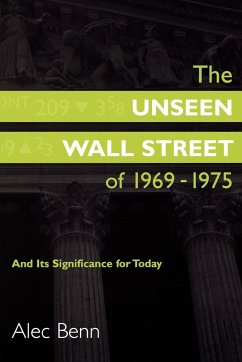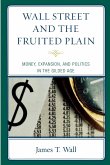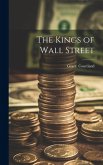From long, firsthand experience as president of his own financial advertising agency, Alec Benn offers a unique, inside look at America's investment community, at a time of changes so profound that their impact and implications are still with us. Based not on public relations handouts (although he himself has written them) but on frank, revealing talks with people who actually participated in the events of those tumultuous seven years, on official oral histories (hitherto concealed), and on his own keen observations, Benn shows how those events and changes really occurred. He reveals that the New York Stock Exchange (NYSE) was in far greater peril of collapse in 1970 than anyone, except a few insiders, has ever known. He exposes how many of the most significant changes ever to affect investors really came about. And he provides new insights into the people who caused, influenced, or sometimes opposed the reforms we now take for granted, as well as into the impact of historical figures such as Richard Nixon and Ross Perot. Informative, entertaining, and impeccably researched and documented, Benn's book gives us new information to help evaluate the investment world of today, and to appreciate how dangerous it was at another time, a time that some say appears uncomfortably familiar. Among the many topics Benn examines in depth is the creation of the Securities Investors Protection Corporation, the agency that insures against loss of the cash and securities left by investors in their brokers' hands. He shows how stock brokers' commissions came to be competitive and low, instead of fixed and high (a special benefit for today's day traders), and how members of the New York Stock Exchange became able to sell shares in their firms to the general public, opening a bountiful source of permanent capital. He goes on to cover the creation of the Central Certificate System, which led to a dramatic increase in trading volume later, and how the NYSE was reorganized, benefiting not only members but investors as well. Benn also explores how NYSE member firms became authorized to sell annuities and other insurance products, in itself a billion-dollar business. Finally, in an especially telling chapter, he discusses how and why discrimination on Wall Street based on class, religion, race, and gender declined (and by inference, why in some places it still lingers.)
Hinweis: Dieser Artikel kann nur an eine deutsche Lieferadresse ausgeliefert werden.
Hinweis: Dieser Artikel kann nur an eine deutsche Lieferadresse ausgeliefert werden.








